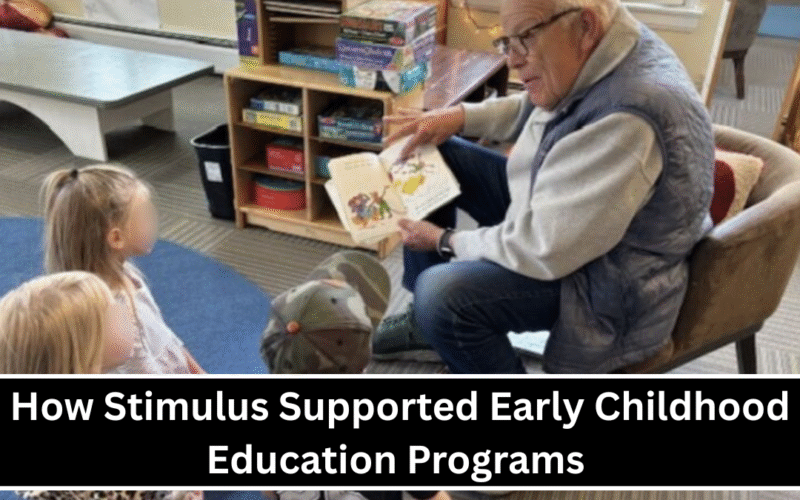When the COVID-19 pandemic hit the world, it changed everything—including how young children learn. Early childhood education programs, like preschools and daycare centers, faced huge challenges. Many had to close their doors or reduce services due to safety rules, low funding, and staff shortages. This was a big problem, especially for low-income families. Thankfully, the U.S. government stepped in with stimulus funding—a financial boost to help these programs survive and improve. This support helped protect young learners and keep their education on track during tough times.
What Is the Role of Stimulus in Early Childhood Education?
Stimulus funds came from several government packages like the CARES Act, CRRSA Act, and American Rescue Plan (ARP). These funds were used to help schools, families, and child care centers manage the effects of the pandemic. For early childhood education programs, this money was a lifeline. It helped pay for rent, cleaning supplies, staff wages, and even virtual learning tools.
Many early childhood centers were able to reopen or stay open safely because of this help. Programs used the funds to buy masks, hand sanitizers, and air purifiers to keep kids and staff safe. Some also improved their classrooms or added outdoor learning areas. The funding also helped train teachers in new ways of teaching, including remote learning and emotional support for children affected by the pandemic.
How Did Stimulus Support Help Children and Families?
For parents, stimulus support made it easier to send their children back to trusted programs. In some areas, the money helped reduce or eliminate fees for low-income families. This gave parents a chance to return to work, knowing their children were in safe hands. For children, these programs provided more than just learning. They offered meals, social interaction, and emotional care—especially important after months of isolation. Many programs expanded services like counseling, health screenings, and language support for children from diverse backgrounds.
Stimulus funds also helped address the staffing crisis in early education. Many teachers had left their jobs due to low pay or health risks. The funding helped raise wages, give bonuses, and recruit new staff, so programs could meet the growing demand from families.
Stimulus support during the pandemic helped early childhood education programs survive and grow stronger. It made it possible for thousands of child care centers and preschools to reopen, hire staff, and provide safe, high-quality education to young children. This investment also helped working parents, especially women, return to their jobs and support their families. While the stimulus was temporary, it showed how important early education is for the future of children and the country. Continued support in this area can ensure that every child, no matter their background, gets the best start in life.
FAQ’s:
Q1. What is stimulus funding?
A1. Stimulus funding is money the U.S. government gives to support the economy during emergencies like COVID-19. It helps people, businesses, and schools recover.
Q2. How did stimulus funding help early childhood education?
A2. It helped programs stay open, improve safety, pay staff, and support families with reduced costs or free services.
Q3. Did all child care centers get stimulus support?
A3. Not all, but many centers that applied through state programs received funds. The goal was to help the most at-risk and low-income areas first.
Q4. How did this support help parents?
A4. It gave parents access to safe and affordable child care, so they could return to work and support their families during the pandemic.
Q5. What long-term impact did the stimulus have?
A5. It improved learning environments, trained teachers, and highlighted the need for ongoing investment in early childhood education nationwide.
